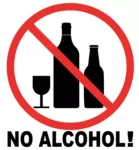
Therapy and counseling are essential for managing and preventing alcohol seizures, especially related to alcohol withdrawal. Addressing the psychological aspects of AUD is crucial for long-term recovery and seizure prevention. For those with epilepsy, alcohol can trigger seizures, especially during withdrawal. The interaction between alcohol and antiseizure medications can exacerbate the situation, highlighting the need for caution among those with epilepsy. Alcohol withdrawal is a potentially serious complication of alcohol use disorder.
- These changes have a kindling effect, meaning they act as a kindle and trigger seizures during subsequent withdrawal episodes.
- After the seizure, you should position them on their side and ensure that their airway is clear while waiting for emergency assistance.
- Oral administration is insufficient, as the intestinal thiamine absorption is too low and may be severely impaired in alcohol abuse (22).
- BZDs elicited similar changes in alcohol withdrawal scores compared with other drugs.
Alcohol-related seizures in people without epilepsy

Then a dose of 250 mg of thiamine should be continued once daily for 3 to 5 days depending on response (37). Patients with manifest Wernicke-Korsakoff syndrome may benefit from a treatment period of up to 2 weeks. Acute seizure treatment should follow standard protocol, ie, repeated doses of a benzodiazepine (preferably lorazepam or diazepam) until seizures stop. If ineffective (alcohol-related status epilepticus), sodium valproate should be considered before fosphenytoin/phenytoin, as phenytoin has been shown to be ineffective in preventing recurrent seizures in three controlled studies (20). We publish material that is researched, cited, edited and reviewed by licensed medical professionals. The information we provide is not intended to be a substitute for professional medical advice, diagnosis or treatment.

Assessing Severity

People with alcohol withdrawal seizures may also experience tremors, hallucinations, muscle spasms, and a rapid heart rate. The authors report that over 90% of alcohol withdrawal seizures occur within 48 hours after the last drink. Alcohol seizures are a serious and potentially life-threatening condition that can occur due to excessive alcohol consumption or during withdrawal.

Health Conditions
Similar to benzodiazepines, dose regimens vary from study to study with phenobarbital (44). A retrospective cohort study comparing use of CIWA-Ar-guided benzodiazepine protocol versus scheduled intramuscular phenobarbital in patients with severe alcohol withdrawal reported significant decrease in length of stay (30). Parenteral phenobarbital should be used with caution and in a setting with frequent supervision due to the risk of sedation and respiratory depression (79). Phenobarbital has not been approved by the Food and Drug Administration for alcohol withdrawal. Further research with large randomized clinical trials with standardized phenobarbital protocols are needed because evidence for treatment comes mainly from observational studies (49). Studies focusing on alcohol withdrawal seizures as the main outcome are lacking (62).
Recent Activity
According to a Cochrane review, there is insufficient evidence to guide the selection of dose, frequency, route, or duration of thiamine for prophylaxis or treatment of Wernicke-Korsakoff alcohol withdrawal seizure syndrome (12). Parenteral administration of 250 mg thiamine should be given in the emergency room before any carbohydrates are started to prevent Wernicke-Korsakoff syndrome, and this dose should be continued daily for 3 to 5 consecutive days (69). Oral administration is insufficient, as the intestinal thiamine absorption is too low and may be severely impaired in alcohol abuse (22). Case-control studies convincingly demonstrate the association of first seizures to alcohol use in a dose-dependent manner. For example, the risk was 3-fold for people drinking 51 to 100 g alcohol/day and steadily increased to 8-fold and more than 16-fold for people drinking 101 to 200 g/day and more than 200 g/day (47; 36).
Risks of an Alcohol Withdrawal Seizure
- Although these data are encouraging, further confirmatory studies are needed to establish the role of baclofen in AWS.
- • Existing alcohol-related liver damage is an important consideration in choice of antiepileptic drug treatment.
- Special attention should be placed on whether extrinsic facilitating factors potentially share common mechanisms with seizures triggers in reflex epilepsy syndromes.
- Withdrawal occurs when a person drinks large quantities of alcohol for a period of time and then suddenly stops or reduces their intake.
Alcohol dependence occurs after a period of consistent drinking or frequent binge drinking. Drinking every once in a while and even heavy drinking on the weekends may not lead to chemical dependence on alcohol, although it could lead to other dangerous consequences. Dependence is a chemical response to the consistent presence of alcohol in your brain and body. Despite its legal status and cultural acceptance, it is a serious psychoactive substance that can profoundly affect your health. Alcohol can be dangerous to abuse, but it can also be dangerous to quit too quickly.
- Alcohol can provoke seizures by interfering with neurotransmitters in the brain, particularly GABA, which regulates neuronal excitability.
- The gold-standard treatment for alcohol withdrawal syndrome is represented by benzodiazepines.
- American Addiction Centers (AAC) is committed to delivering original, truthful, accurate, unbiased, and medically current information.
- Kindling is a term describing a neurological phenomenon that makes alcohol withdrawal symptoms worse after previous withdrawals from depressant drugs.
- Drinking every once in a while and even heavy drinking on the weekends may not lead to chemical dependence on alcohol, although it could lead to other dangerous consequences.
What Are the Risk Factors for Alcohol Withdrawal Seizures?
- Calusa is here to provide guidance and care to meet alcoholic withdrawal and seizure prevention requirements.
- The CIWA-Ar scale is appropriate for monitoring, and benzodiazepines and barbiturates are the treatment of choice in these patients (79).
- In addition, alcohol boosts the traditional “feel good” dopamine neurotransmitter, which in turn entices the user to drink more over time.
- In addition, alcohol withdrawal is characterized by insomnia and gastrointestinal disturbances (nausea and vomiting).
Binge drinking is defined as a pattern of alcohol intake that causes the blood alcohol concentration (BAC) to be 0.08% (0.08 g/dL) or higher. This typically occurs if women have 4 or more drinks and men have 5 or more drinks within about a 2-hour period. Your risk of developing seizures seems to increase with an increasing amount of alcohol. Seizures often seem to develop in the hours after you stop consuming alcohol. In a 2020 study, research found that the risk of SUDEP was twice as high in people with a history of alcohol dependence or substance misuse disorder.
People with a long history of heavy alcohol use are more likely to suffer severe withdrawal effects, including alcohol seizures. When this effect occurs deeply or over a long period of time, brain activity can rebound during alcohol withdrawal, exceeding normal levels and creating the risk of a seizure. Someone with an alcohol withdrawal seizure mayexperience convulsions and lose consciousness. People with epilepsy should consult their doctor before using alcohol, as alcohol can affect epilepsy medications.



